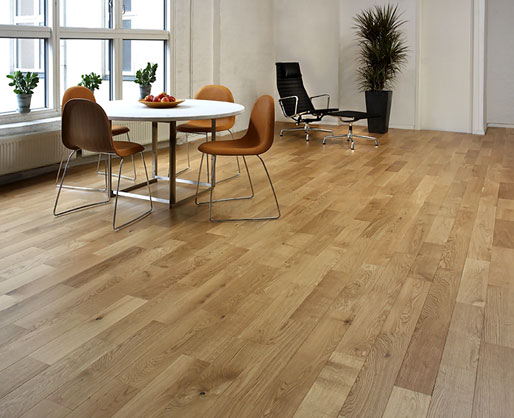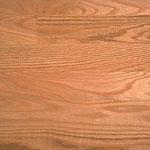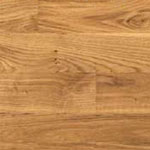Serving Upstate NY—VT—MA • For selections & prices, CALL or EMAIL US
Oak
Scientific Names:
Quercus rubra
(see Red Oak for details)
Quercus alba
(see White Oak for details)

Oak is practically synonymous with high-quality,
durable, and distinctively attractive wood floors.
Origin:
The commercial domestic species of red and white oak are widely distributed throughout the United States.
Appearance:
The heartwood and sapwood of red oak are similar in appearance, which is light-colored with a reddish tone. It is slightly redder in color than white oak, which can have a white to cream to light-brown color. The grain of red oak is open, and also somewhat coarser (and so more porous) than that of white oak, which tends to have longer rays. These distinctive rays are what make white oak so prized for construction of Mission-style furniture and woodwork.
Depending on whether the wood is plainsawn, riftsawn, or quartersawn, the grain of both red and white oak can have a plumed or flared appearance, a lighter grain pattern with low figuring, or a “flake” pattern that is referred to as “tiger rays” or “butterflies.” Red oak boards can show a pronounced variation in appearance, depending on subspecies group, origin, growing season, and other factors; white oak, however, shows much less variation.
Properties:
White oak is slightly harder than red oak, and also more durable. However, both types are notably stiff and dense, have high shock resistance, and resist wear. Because of the high concentration of tannic acid in white oak, it is particularly resistant to fungi and insects.
Janka Hardness:
White oak has a ranking of 1360; while red oak, the “benchmark” of the Janka scale, is 1290.
Workability:
Both red and white oak have good resistance to splitting and excellent holding ability. Red oak sands better than white; by contrast, white oak has better machining qualities. Because of its relatively high porosity and low concentration of tannin, red oak works better for bleached floors than white oak, which can turn green or brown when the surface comes in contact with bleach or water-based finishes.
Principal Uses:
In addition to providing the raw material for durable and distinctive flooring, oak is widely used in ship building, furniture and veneers, kegs and casks, truck and trailer beds, caskets, paneling, and mining timbers. Oak also makes a nice-burning fuel wood, and it yields tannin for the formulation of dyes.






